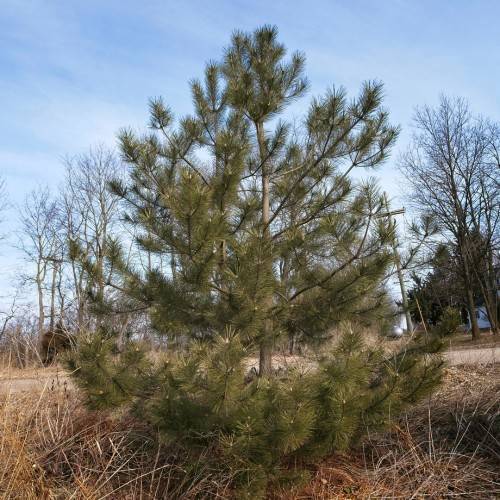
Austrian pine
Pinus nigra
Also Known As - black pineCycle:
Perennial
Watering:
Average
Hardiness Zone:
4 - 7
Flowers:
Flowers
Sun:
Full sun
Soil:
Well-drained
Cones:
Yes
Leaf:
Yes
Growth Rate:
Low
Maintenance:
Moderate
Drought Tolerant:
Yes
Salt Tolerant:
Yes
Invasive:
Yes
Care Level:
Medium
watering
Austrian pine (Pinus nigra) needs to be watered once every 5-7 days. During the spring and summer, it should be watered more deeply and more frequently, about once a week or so. During the fall and winter, water only when the soil begins to dry out. It is important to keep the soil evenly moist, but not waterlogged. Avoid wetting the needles of the pine tree, as it can cause fungus growth. Generally, a slow and thorough watering is best for Austrian pines; about 1-1.5 inches of water per week is recommended.
sunlight
Austrian Pine (Pinus nigra) requires full sun with 6-8 hours of direct sunlight daily. This coniferous evergreen prefers these sun exposures for optimal growth and health. Austrian Pines have a medium to fast growth rate and should be planted in a spot with well-draining soil. Avoid planting this species in low-lying areas as they do not tolerate wet soils. As this species has a tight foliage density, it is highly effective when planted as a windbreak or privacy hedge.
pruning
Austrian pine should be pruned in early spring (March or April) to shape and thin out the interior foliage. This evergreen coniferous tree typically requires very light annual pruning, typically no more than 10-15% of its overall foliage. The main goals of pruning Austrian pines are to reduce excessive foliage, create an aesthetically pleasing shape, and to avoid overcrowding of the canopies. Before pruning, individual branches should be evaluated to determine if they are diseased, broken, dead, or weakly attached. These should be cut back to healthy wood. When cutting back individual branches, the tips should be pruned in a slight angle in order to prevent water from collecting on the cut surface, which could attract fungi or pests. Furthermore, the depth of pruning cuts should be limited to no more than 1/3 of a branch's diameter in order to avoid damaging the tree's overall health.
